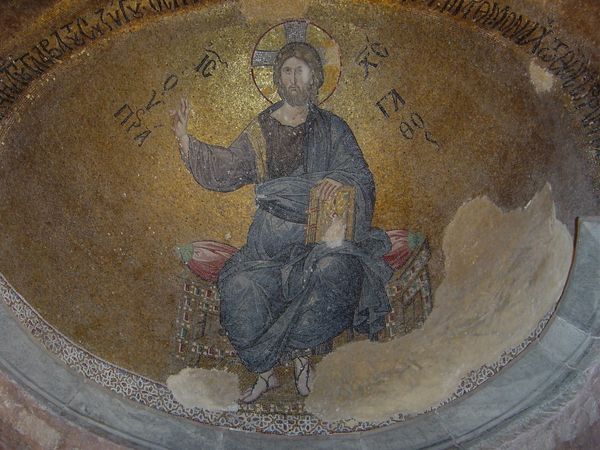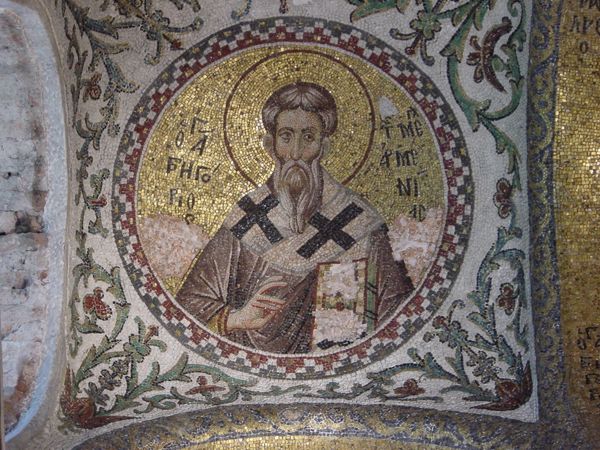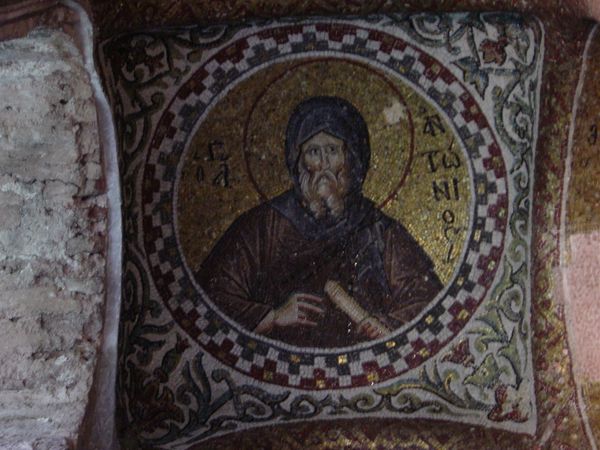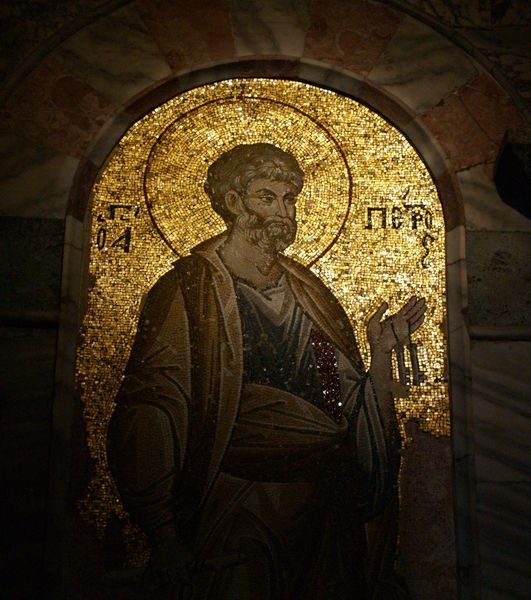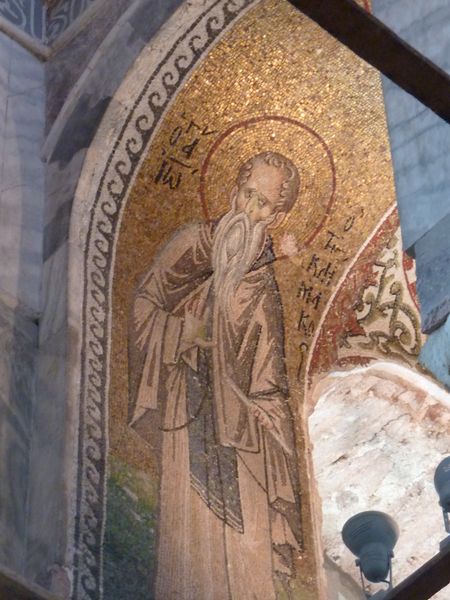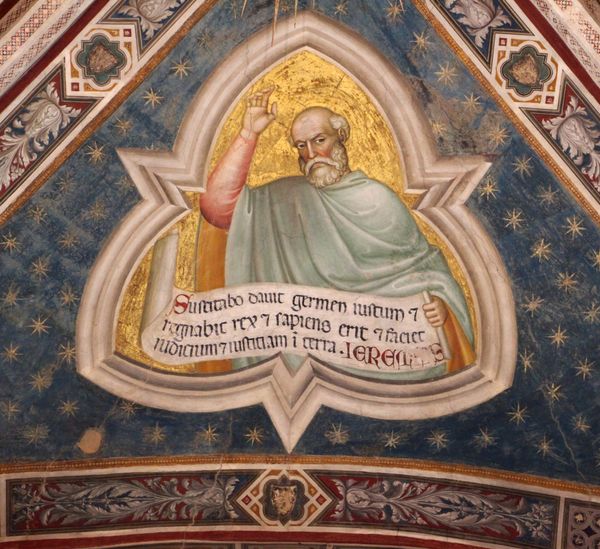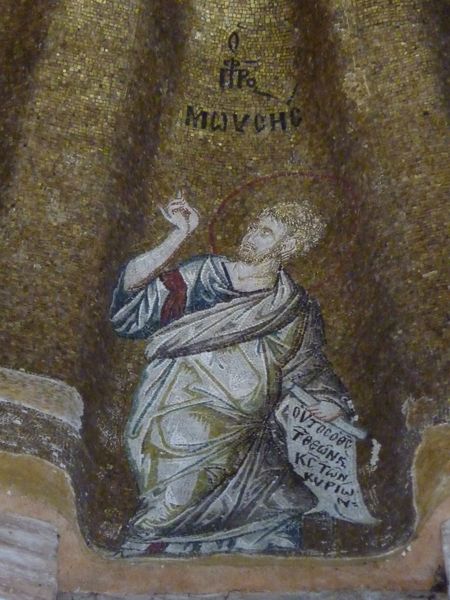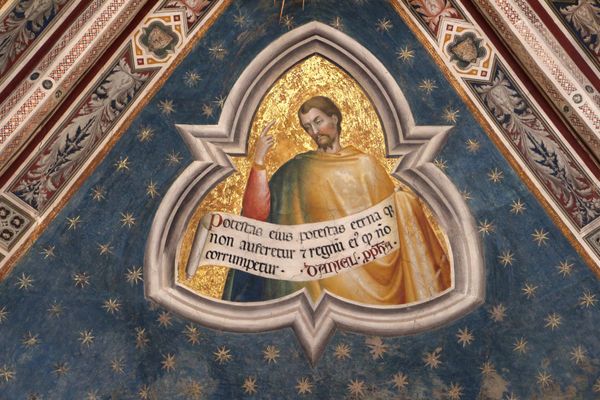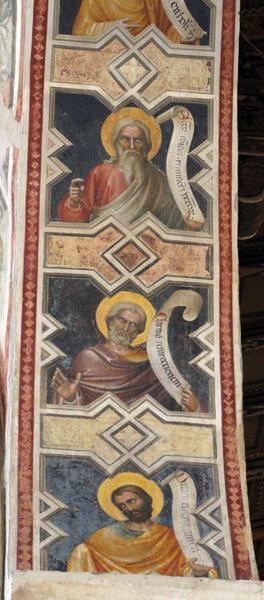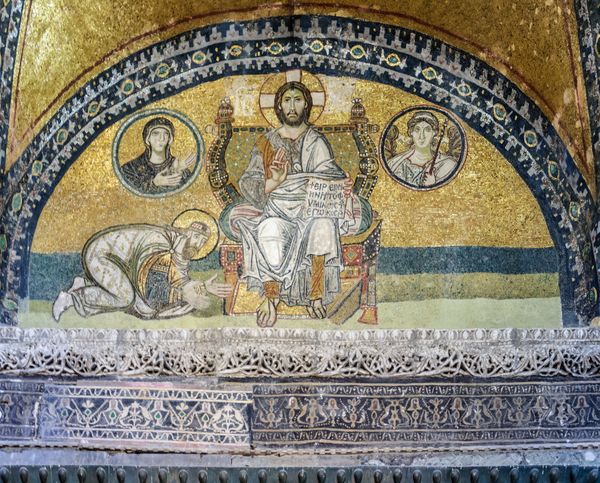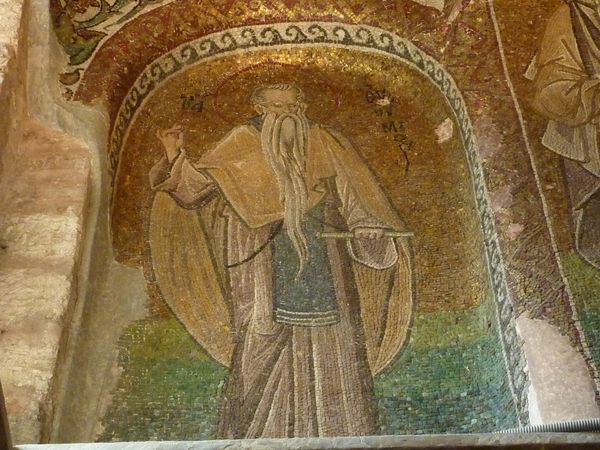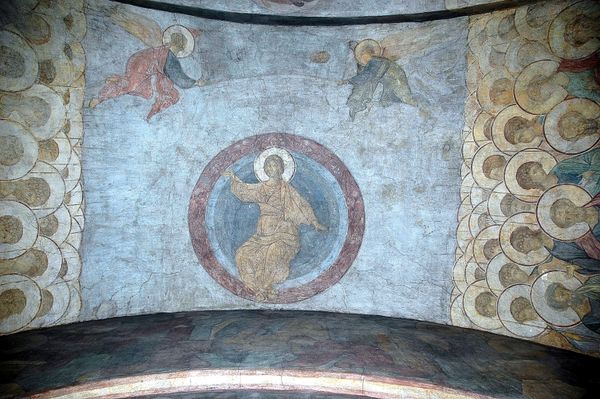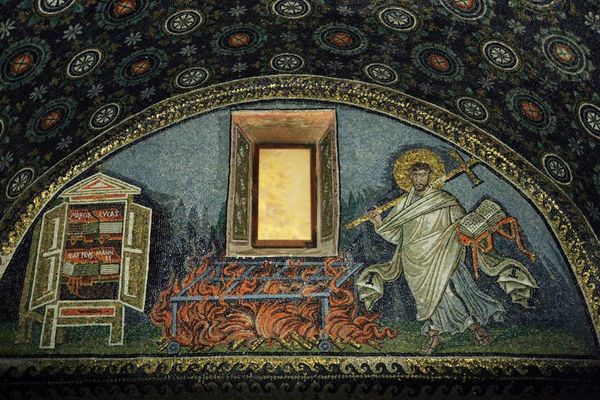
mosaic, tempera
#
mosaic
#
byzantine-art
#
tempera
#
figuration
Copyright: Public domain
Curator: Here we have a mosaic depiction of Jesus Christ, dating back to around 1300. It resides within the Pammakaristos Church in Istanbul, revealing the intricacies of Byzantine artistry. Editor: My first thought? It’s rather stern, wouldn't you say? The figure is imposing, almost judgmental. The gold background amplifies the intensity, yet there's a certain detachment, a lack of immediate accessibility. Curator: Indeed. Notice the hierarchical scale; Jesus is central, enveloped in a celestial gold ground—the supreme position affirmed by the deliberate use of light and color. Consider also how tempera defines lines adding an organic realism over the geometry of the tesserae. The effect is commanding, isn’t it? Editor: Commanding, yes, but also symptomatic of its time. Religious artwork was often deployed to bolster the prevailing sociopolitical ideology. What power structures are reflected in this choice of posture, expression, the overall setting? The sternness likely signals a societal expectation, using the image of Christ to encourage, or perhaps enforce, compliance. Curator: A valid interpretation. Although I suggest observing how his gaze, though direct, possesses a sort of distant empathy. I think this is less about power and more about transcendence. His raised hand is rendered with deliberate articulation. The composition invites contemplation through geometric balance, though the incomplete lower register adds dynamism, pulling the focus up. Editor: And what of the location itself, Istanbul? Pammakaristos Church bears layers of complex history, having undergone periods of transformation into both a church and a mosque. It's intriguing to consider how shifts in religious contexts have imbued these representations of Christ with revised cultural significance. Curator: An excellent observation; location and placement always infuse additional layers into readings of works of art. Considering Byzantine aesthetics, perhaps these geometric and representational elements converge into a complex visual theorem—beauty through both rigid form and delicate tempera strokes? Editor: Perhaps. Still, I feel that to fully appreciate this artwork, we must consider not just its artistic merit but the history it represents, the power dynamics it embodies. These pieces, while aesthetically captivating, continue a conversation with audiences centuries removed, sparking crucial reflection. Curator: A conversation where everyone brings their unique perspective. That's, ultimately, the lasting power of visual language.
Comments
No comments
Be the first to comment and join the conversation on the ultimate creative platform.
